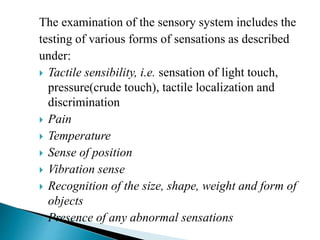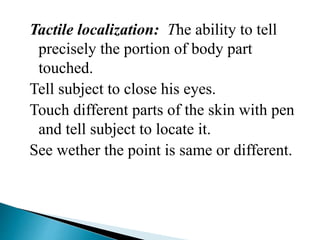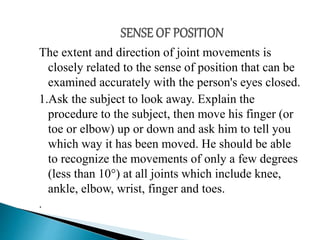The examination of the sensory system tests various sensations including tactile sensibility, pain, temperature, sense of position, vibration sense, and stereognosis. Tactile sensibility involves testing light touch, crude touch, tactile localization, and tactile discrimination using materials like cotton wool and an aesthesiometer. Pain, temperature, position, and vibration are tested using methods like pins, warm/cold water, joint movement assessment, and tuning forks. Stereognosis is the ability to recognize objects by touch without sight. Abnormal sensations may also be noted.





















